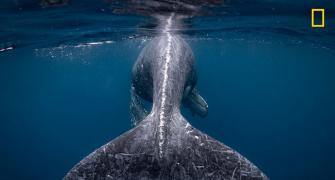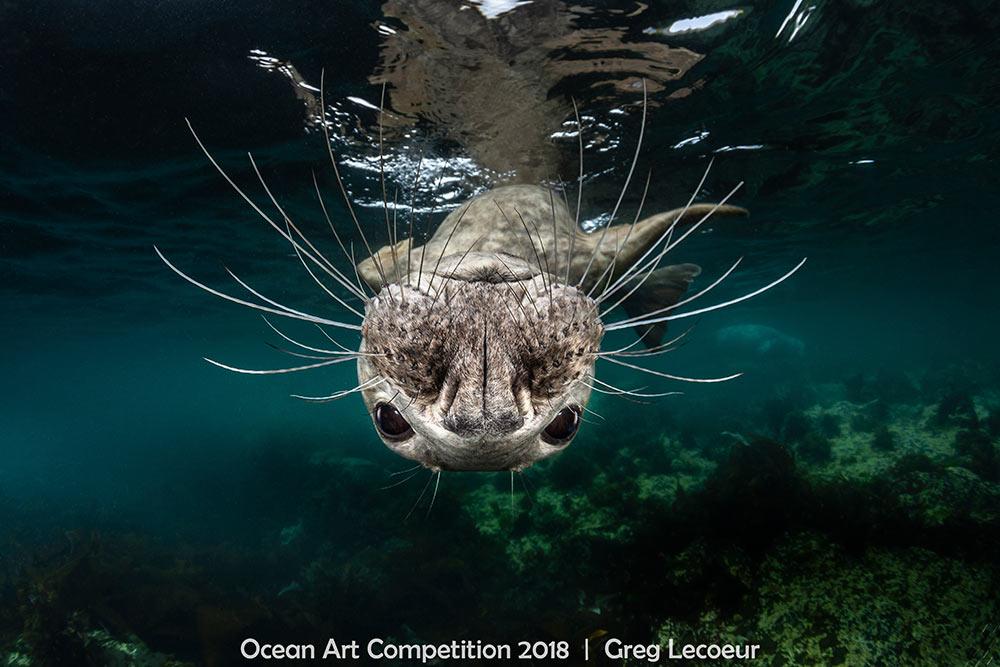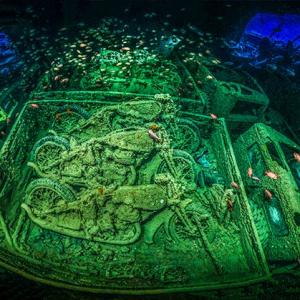Sharks, mating frogs, seals playing with photographers… these are the amazing photos which offer an enchanting breadth of what’s beyond the shoreline.
Underwater Photographer of the Year has announced the winners of its 2019 photo contest and photographer Richard Barnden, from the United Kingdom, was named Underwater Photographer of the Year 2019.
Prizes and commendations were handed out in categories including Wide Angle, Macro, Wrecks, Behaviour, Portrait, Black and White, Compact, Up and Coming, and in British waters, Wide Angle, Living Together, Compact, and Macro Shots.
UPY was once again kind enough to share some of this year’s honorees with us below, with captions written by the photographers.
(Please click on the images for a full-screen resolution)
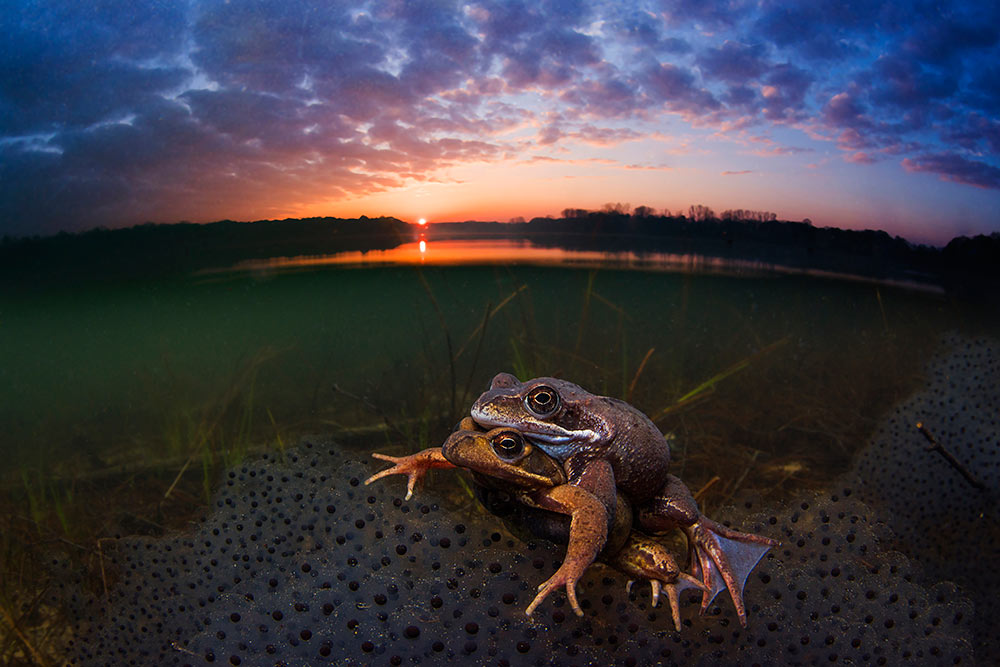
This photo is a double exposure made in De Melle Turnhout Belgium when I arrived at the water I saw the beautiful sunrise and quickly walked into the water to make the first shot so that the bottom half of the photo was black. I went looking for the mating frogs and fortunately still found on top of their eggs and so I put the 2 images together in the camera.
Photograph: ©Luc Rooman/UPY2019

I put the camera in shallow water and waited nearby for the moment. One day a mother bear came close and started fishing. Her 4 cubs 1.5 years old were bored. They started to play with each other and suddenly found a camera under the water and started to explore it.
Photograph: ©Mike Korostelev/UPY 2019

In the first three months of the year I often go to the Gulf of Trieste in the north-east of Italy where I do night dives to take pictures of small cuttlefishes, more precisely of the species "Sepiola sp.". The hope, given the period, is to find the cuttlefish during the mating phase. During the research I found this Sepiola that moved about a half metre from the bottom. Looking at his way of moving, I was reminded of the idea of trying to make a panning shot and to photograph the effect of the movement to give dynamism to the image. Using the slow sync flash technique, after some unsuccessful attempts and after changing the parameters of my camera, I managed to capture an image that represents the movement and good visual impact. (Actually they move in the opposite direction... but that's another story).
Photograph: ©Fabio Iardino/UPY 2019
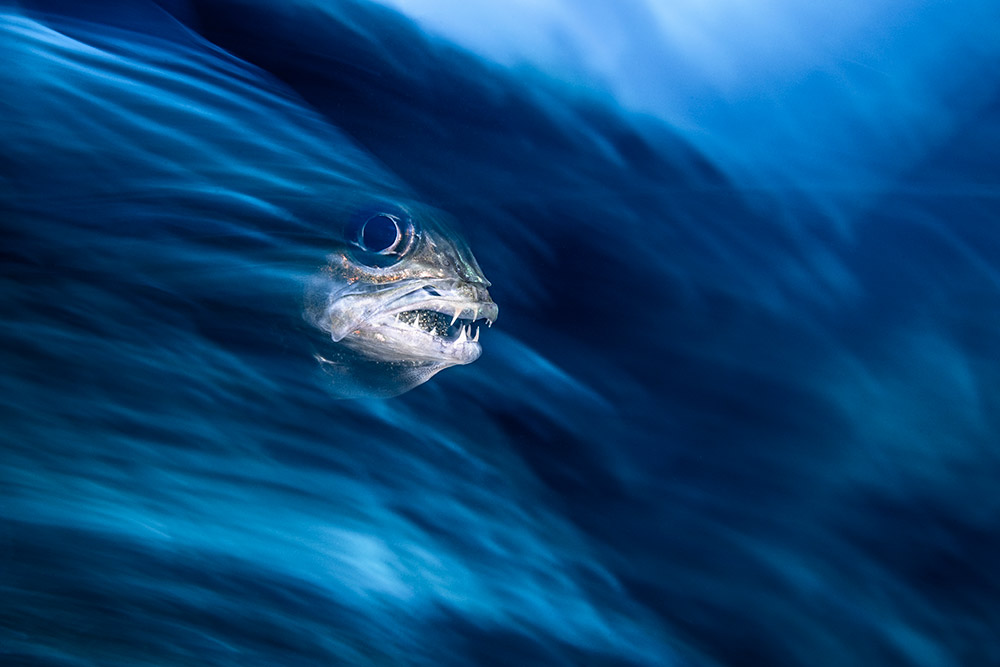
The face of a Tiger Cardinal fish, open-mouthed, with sharp teeth protruding, and eggs within, is captured within a wave of blue. Cardinal fish are famous mouth-brooders, with the male responsible for guarding the eggs until they are ready to hatch. I have long been fascinated by this behaviour and spent three dives with this particular individual, slowly earning sufficient trust to allow me the intimacy to capture this image in close confines. With a lot of patience and perseverance, the encounter is best remembered with this frame.
Photograph: ©Henley Spiers/UPY 2019

Romblon, located in the Philippines is the house of some unique sea slugs. The first time I saw a picture of this Cyerce nigra on social media, immediately our next diving destination was known. At Romblon, it was a challenge to get this really, really small sea slug in a special way on the photo. In contrary to most of the nudibranchia, for its size this sea slug moves really fast, having its cerata fluttering like the wings of a butterfly. Together with my snoot I was able to make this photo.
Photograph: ©Bruno Van Saen/UPY 2019

As the sun sets on Fakarava South Pass, the estimated 700 sharks that are patrolling the mouth of the channel by day, begins to hunt at night. The gauntlet is about to unfold. Descending into the darkness I can feel my heart beating a little faster than normal as hundreds of sharks are now covering the bottom. This unlucky parrotfish dodged in and out of the patch coral heads looking for somewhere to hide as swarms of sharks followed in hot pursuit. One grey reef shark suddenly grabbed the parrotfish by its head as the another twisted underneath it to get a better grip. In desperation it hurtled straight towards me as I snapped a few passing shots and curled up into a ball as the frenzy of sharks shot past, leaving only but a few falling parrotfish scales behind.
Photograph: ©Richard Barnden/UPY 2019
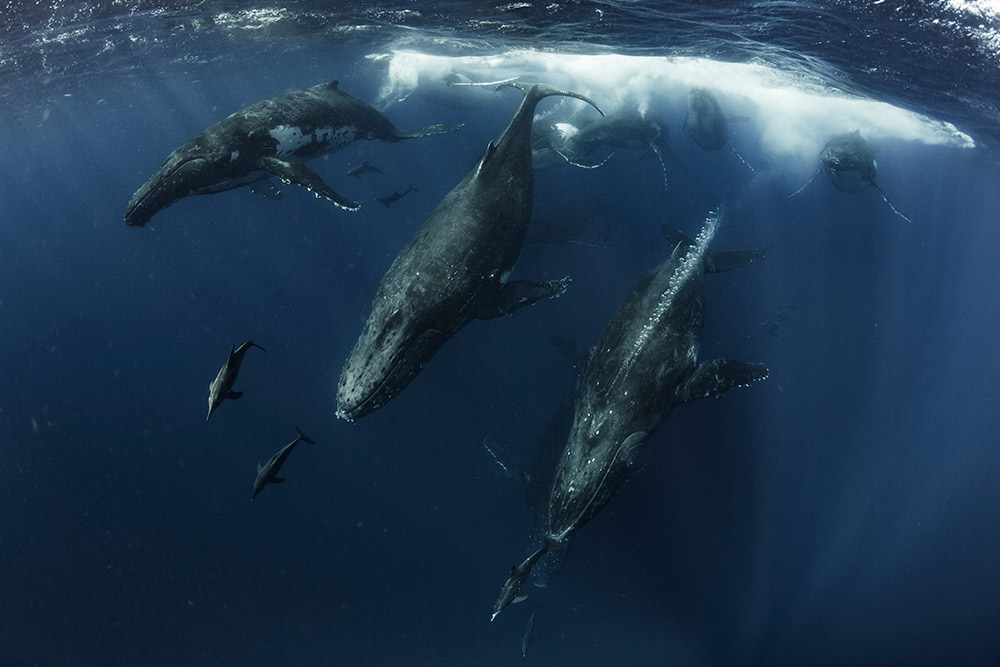
The heat run is the ultimate wildlife encounter, multiple whales competing for a female, the chase can last for hours or even days. Often many dolphin species are found moving with the Humpback groups. It is truly one of nature's great events and is truly heart-thumping and adrenaline-pumping action to be a part of. On this day we jumped in with this group of 16 whales and 50 dolphins moving at high speed.
Photograph: ©Scott Portelli/UPY 2019

I visited Stratoni three times in August 2018 for a photo project dedicated to the seahorse colony that managed to survive there. On my third and last visit I was planning to create a specific group photo of seahorses, before the sunset using natural light. Just on time of the big finale, a small ray came into the scene! Hidden in the sand a few centimetres from my camera, took off swimming in the shallows. I managed to swim with him and place my camera underneath to capture a portrait of his belly with the mouth and nose looking like a smiling happy angel's face, with the sun beams on the background softening the colour to emerald.
Photograph: ©Nicholas Samaras/UPY 2019

The Galapagos Islands are the only place on the planet that you can see marine Iguanas in their natural habitant. This photo looks like the fictional character Godzilla that is smiling before starting some mischief.
Photograph: ©Bruce Sudweeks/UPY 2019
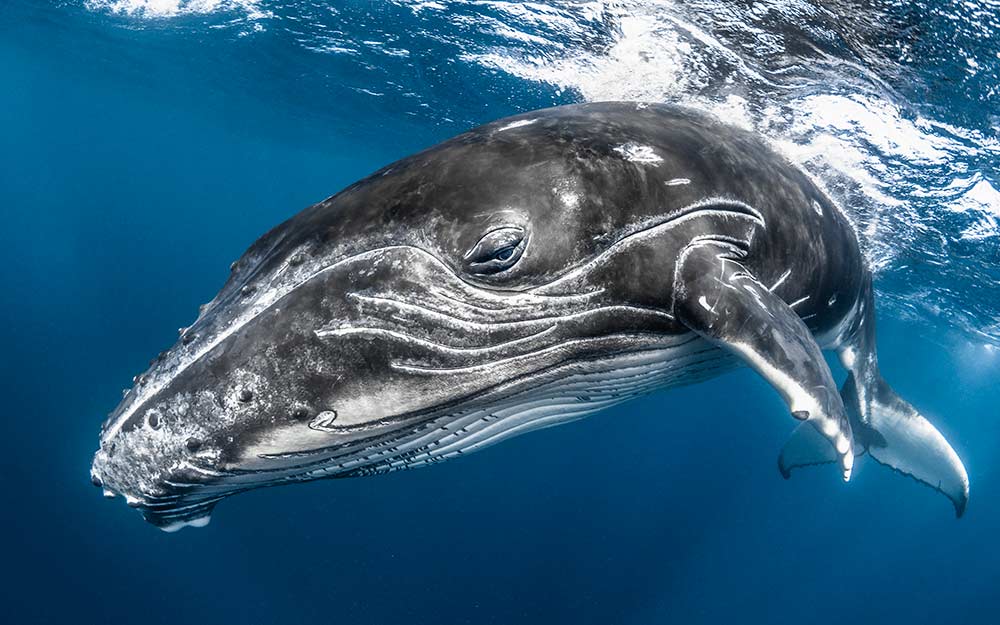
During a trip to the TongaIslands in the Pacific Ocean, we interacted with a female humpback whale and her calf that offered us a unique show. The curiosity of this big baby had no limit by investigating as closely as possible a strange species call "Human". Photograph: ©Greg Lecoeur/UPY 2019
Photograph: ©Greg Lecoeur/UPY 2019

10 metres down, I found myself hovering between two worlds. Below, an enormous school of fish covered the bottom as far as I could see. Above, a single Cormorant patrolled the surface, catching its breath and peering down at a potential underwater feast. The cormorant, better designed for swimming than flying, would dive down at speed, aggressively pursuing the fish. The school would move in unison to escape the bird's sharp beak, making it difficult to isolate a single target.
Photograph: ©Henley Spiers/UPY 2019

My wife and I were visiting Cayman for the first time. We were mostly diving from a boat on this trip and heard a rumour about silversides making a short appearance near Devil's Grotto at Eden Rock. It is a rare event, but absolutely magical to witness. Hundreds of thousands of these tiny fish flow like mercury through the multiple swim through trying to avoid becoming dinner for the massive tarpon in the area. At this moment, a tunnel appeared between us and I was thrilled to capture the moment!
Photograph: ©Ken Kiefer/UPY 2019
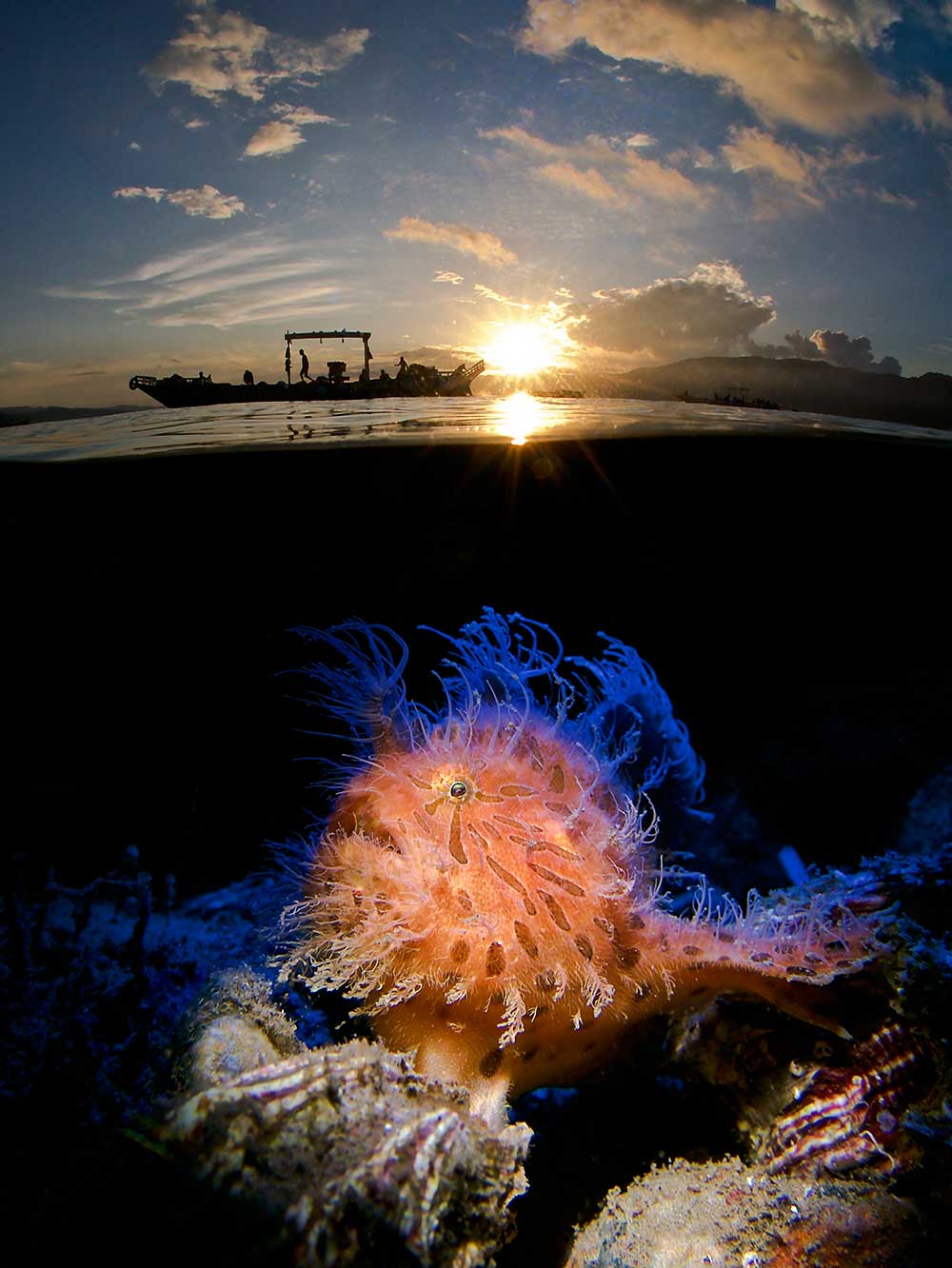
For this picture of a juvenile Spanish Dancer I used the double exposure setting in the camera. The first Shoot was taken at night. It's a long exposure shot with reflective kitchen sponge and two blue coloured flashlights. I shook the camera to get the unique Style. For the second shoot my spotter Wayan Jhon found a juvenile Spanish Dancer crawling on a nice orange stone.
Photograph: ©Enrico Somogyi/UPY 2019

Shaun the sheep is everyone's favourite nudibranch but I wanted to make it different than others. I decided to do light from the bottom instead from the back. When I did it the Nudi glowed so I shot it using a Bigblue torch without using any strobes and it worked.
Photograph: ©ManBD/UPY 2019

Overwater, beautiful resorts and palm trees in super clear sky. Underwater, nearly 1m depth, colourful and untouched hard corals with some reef fishes.
Photograph: ©Taeyup Kim/UPY 2019
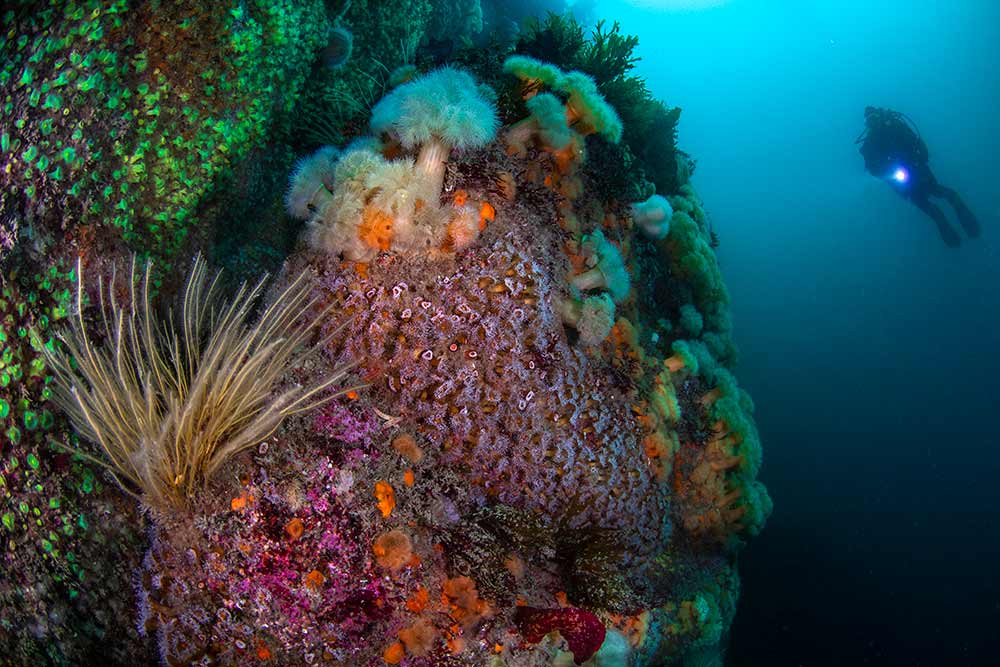
Our dive group was on a private charter with Dive Scilly late last summer. The skipper dropped us on this lovely wall festooned with invertebrate life. I was keen to capture a good wide angle scenic featuring jewel anemones and a diver. When diving in the UK I've found the visibility is rarely good enough for making contrast wide angle pictures, let alone including a model. On this occasion the offshore site afforded us with clear water.
Photograph: ©Robert Bailey/UPY 2019

I'm always on the look out for unusual freshwater subjects and grass snakes are a species I've been after for years. I was told about a pond used for natural swimming and the odd grass snake that hangs around the lilly pads for frogs. I put my Hammond drysuit on and got into the water and could see one slithering along the surface. Slowly making my way towards it with my head only just poking above I got the spilt shot. Many people don't realise how aquatic grass snakes are and often spend time by the water, it was a picture I was chuffed to get!
Photograph: ©Jack Perks/UPY 2019

For many years grey seals have been hunted by humans for their fur and fat, particularly in the 19th century, they have disappeared from many areas of their normal range. They are currently protected by some national and international regulations, but continues to suffer from unintentional catches, poaching (gunfire) and pollution (due to its position at the top of the food chain, its organism is particularly loaded with marine pollutants). In the FarneIslands, they are now protected and large colonies cohabit with humans, becoming one of the tourist interests of this region.
Photograph: ©Greg Lecoeur/UPY 2019
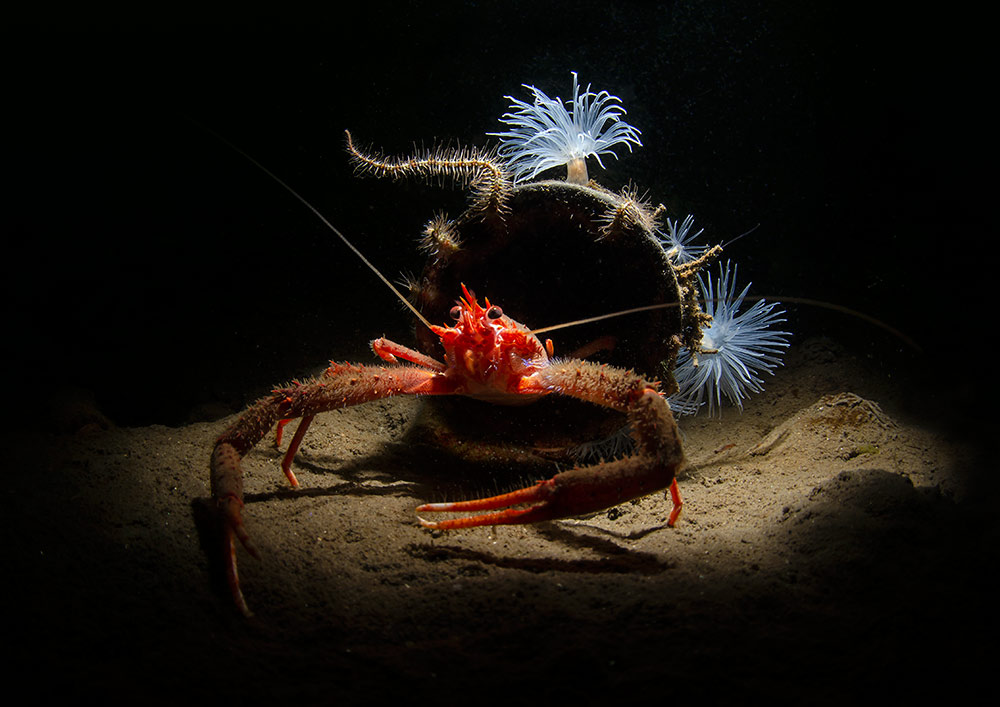
Easter 2018 found me diving in Loch Duich on the west coast of Scotland. My target subject was the fireworks anemone which are found on the muddy sea bed towards the head of the loch. However, while searching for these, I spotted a length of plastic pipe lying partially buried in the mud. Moving cautiously to avoid stirring up the silt, I reached the open end and was delighted to find this collection of marine life. A long clawed squat lobster posed proudly outside his man-made home, which he shared with numerous brittlestars, while dainty sea loch anemones decorated the entrance.
Photograph: ©Arthur Kingdon/UPY 2019

This huge shoal of mackerel forgot to check the tide time table! Caught out by the spring low tide in St Ives harbour, hundreds of mackerel found themselves stuck for a few hours until the tide came back in. The local fisherman told me it very rarely happens so I slowly immersed myself into the pool to capture the spectacle.
Photograph: ©Victoria Walker/UPY 2019

If ever there was an invitation to play this was it! I love diving with and photographing seals, and have dived with them round the UK but this was my first trip to The Farne Islands and what a 'Sealfest' I was treated to. This adorable seal pirouetted and arabesqued around me before sliding in and flicking sand over itself in a final attempt to get me to play - and it nearly worked!
Photograph: ©Martin Edser/UPY 2019
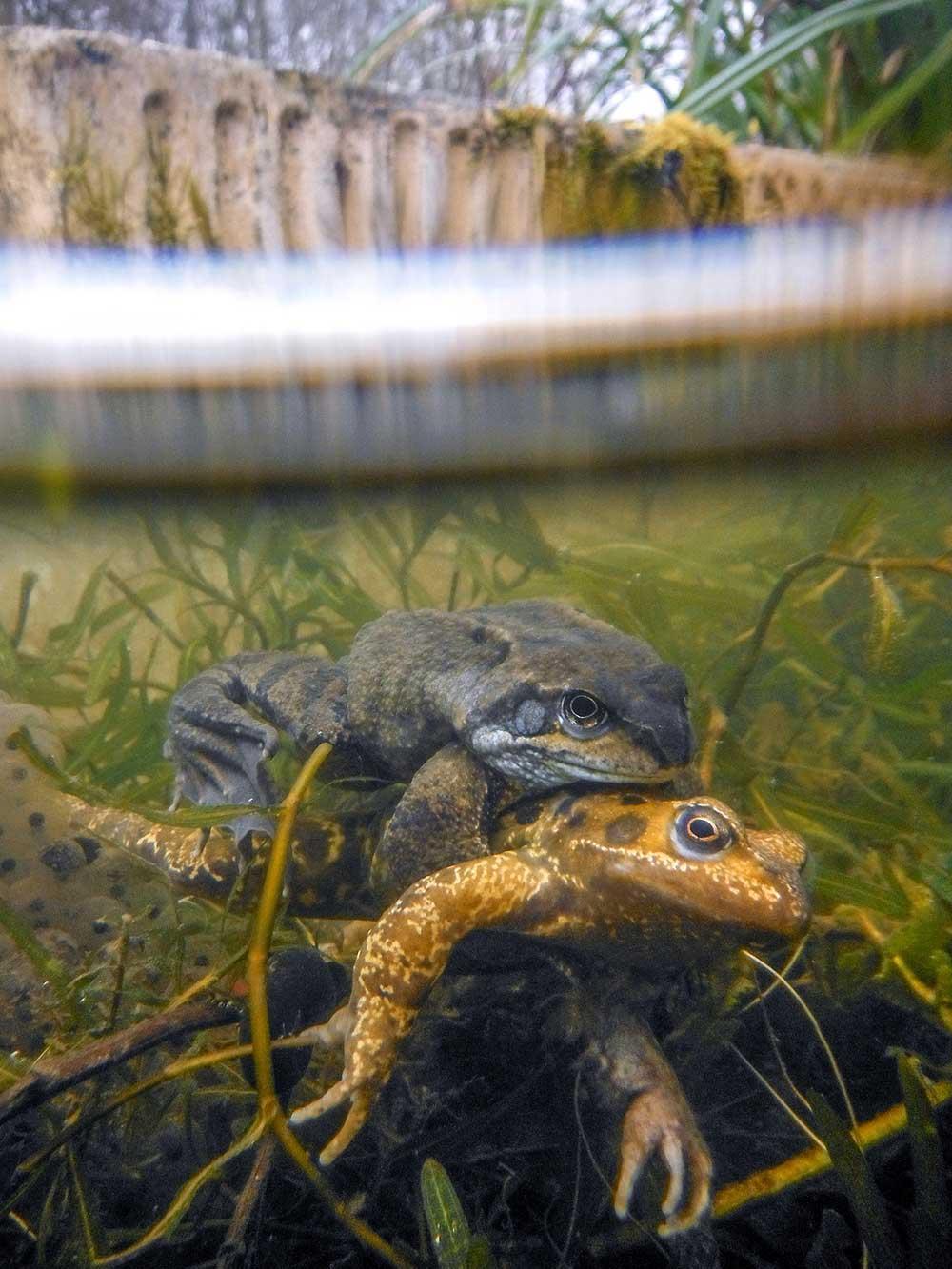
Heading back to my favourite spawning site each year is a photography highlight in my calendar. On this occasion, I really struggled to find frogs spawning! After an hour or so carefully searching I spotted these two common frogs in amplexus just under the surface.
Photograph: ©Ian Michael Wade/UPY 2019

The Caretta caretta turtles spend much of their life in the open ocean. They come to the Canary Island after crossing the Atlantic Ocean from the Caribbean beaches. In this trip of many years they often have to avoid many dangerous traps like plastics, ropes, fishing nets etc. In this particular case it got trapped in a net and it was practically impossible to escape from it... but this day it was very lucky and could escape thanks to the help of two underwater photographers who were sailing near her.
Photograph: ©Acevedo/UPY 2019

Mobula rays are caught and brought by villagers to the Munca fishing port (located in eastern Java), the second largest port in Indonesia. A typical victim of bycatch, mobula ray gills are extracted and exported to China to support the rising demand for traditional medicines. This image depicts a local villager processing a mobula with a traditional katana. I chose this dramatic moment, which invokes the exploitation of these charismatic animals, to raise awareness about their cruel reality.
Photograph: ©Joao Rodrigues/UPY 2019






